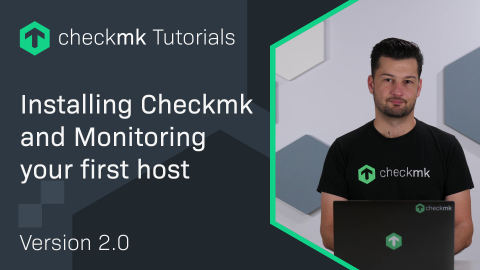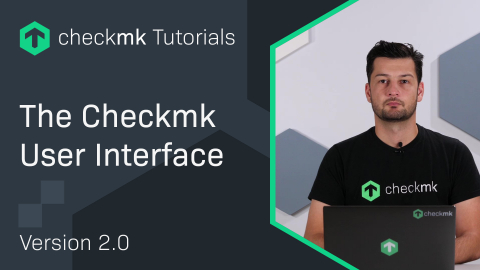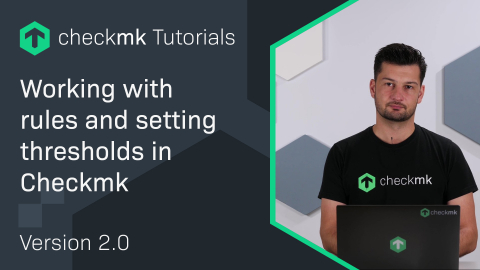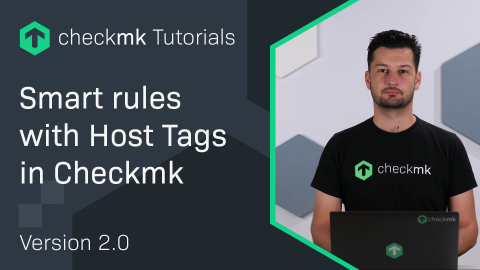Ep. 15: MKPs and Plugins in Checkmk
Note: All the videos on our website offered in the German language have English subtitles and transcripts, as given below.
| [0:00:00] | The 15th episode – and today it's the turn of the MKPs. MKPs are mk packages, and with these you can add extensions to your checkmk system. |
| [0:00:21] | So in this fifteenth episode we will look at the so-called MKPs. 'MKP' stands for Checkmk Package, and an MKP contains extensions for Checkmk. |
| [0:00:31] | These are mostly check plug-ins, but notification plug-ins can also be used, for example, GUI extensions or other items. |
| [0:00:40] | MKPs are the preferred format if you develop your own extensions, to be able to share these with other users, or for an efficient deployment in your distributed environment. |
| [0:00:49] | Of course you don't absolutely have to develop MKPs yourself, but many other users do so, and then upload them to the Checkmk Exchange. |
| [0:00:56] | There in the Exchange you can find a large selection of interesting check plug-ins, including perhaps something that is not included with the Checkmk original. |
| [0:01:05] | A second source for the MKPs are the so-called feature packs – or official Checkmk extensions, delivered in the form of MKPs. I will show you both of these now. We will start with the Checkmk-Exchange. |
| [0:01:18] | You can find the Exchange at exchange.checkmk.com. There you can either search for specific packages or you can see the most recent uploads, and also which packages are the most popular. |
| [0:01:36] | I'll just select any one of these now, for example MicroTik Router Info. |
| [0:01:42] | Go to the details here: it's from the user TomTretbar, there have already been 330 downloads, and here you'll be able to read a short description of what it includes. |
| [0:01:53] | So in this case, for example, they are check plug-ins for MicroTik routers that monitor certain parameters. It's not just a single plug-in, it is a collection of plug-ins. There are in total 21 files in here. |
| [0:02:06] | If you're curious, you can see a list of these. So for example, here's a whole bunch of these check plug-ins. |
| [0:02:13] | There seems to be an agent extension here as well. There are also manpages for the checks – these are short manuals. |
| [0:02:23] | There is even a small GUI extension. This may contain the rule sets that you can use to configure these plug-ins in your own setup. |
| [0:02:33] | So if you say, okay I have a Microtik router, I want to have this extension, so then you go to Download. And now it will simply download a small file. |
| [0:02:42] | It's really very very small – a few kilobytes – and now you have loaded it onto your computer. Okay – now how do you install this package in Checkmk? Well, that is very simple. |
| [0:02:51] | I first go back to my site. Then I go into the WATO to the Extension Packages option. Here for now we will ignore this list of packages here below. |
| [0:03:02] | I will explain about that later. Now we need the Upload Package button. And on this page you can now install the package you have just downloaded. |
| [0:03:14] | Either use this button, or simply drag the package into this field and click 'Upload and install package'. The package now appears here in the list above as an installed package. |
| [0:03:31] | This means that the plug-ins in this package are immediately available for you, and with an Activate changes, the package – the change – will be activated. |
| [0:03:39] | Here, in case of doubt, with a remote setup it will also be rolled out to your other sites. If the package contains new plug-ins, you must of course also perform a Service Discovery, so that any potential new checks can also be found. |
| [0:03:57] | If you are curious, there is also information here. |
| [0:04:00] | So, with a click on the pencil I can see details about the package. This is actually the same as what was visible on the Exchange. |
| [0:04:07] | Please do not be alarmed – you can also edit these entries, so if it is one of your own packages, you can actually quite easily edit the properties of the package here. |
| [0:04:17] | You can also see the files that are included in the package. |
| [0:04:20] | You can also alter these. You can then save these changes and you could then download the changed package again with this button here. |
| [0:04:32] | You have thus effectively created a new version of the package. I earlier promised to explain to you what this list with the other packages is about. |
| [0:04:39] | What you can see here is the content of a Checkmk Feature Pack. |
| [0:04:42] | The Feature Packs have been a new feature included since Checkmk version 1.6,and we introduced these so that we could also provide changes to Checkmk within a stable release. Normally, when you perform an update within a stable version – for example from 1.60p10 to p11 – nothing will be changed apart from Bugfixes. |
| [0:05:05] | Now, however, sometimes we would already like to make some new packages – new check plug-ins – available to you. |
| [0:05:11] | And we do this way now, since sometimes after updating to a new, stable version, packages can appear here in the package manager, however these packages are deactivated. |
| [0:05:23] | That is, you get the changes but they do not affect you at first. No new services will be created, and your users will not be confused by any new features. |
| [0:05:30] | For now, everything will remain as it was, but a very simple installation will make these available to you. |
| [0:05:38] | And the way it works is that in this list, if you want to activate one of these plug-ins, you can simply click on this plug here. |
| [0:05:45] | For example the graylog_special_agent, or here, I can take monitoring for the MongoDB for example, click here on it and then immediately all of this will be installed as an MKP. |
| [0:05:58] | You can also have a look in there – again with the pencil – if you want to see what files are in there. If you decide you want to remove this package, simply use the trash can here, confirm, and the package will be uninstalled again, but it will still be available here in the list. |
| [0:06:15] | In this way you can very easily access the new features, should you want them. |
| [0:06:20] | Otherwise, Checkmk will remain unchanged and this has simply been a stable update with bug and security fixes. If you want to, you can also manage MKPs from the command line. For this purpose there is the 'mkp' command in the instance. |
| [0:06:36] | mkp has a number of subcommands – I can, for example, enter 'mkp list' then I will see a list of the installed MKPs, and I could, for example, enter 'mkp show mikrotik' and I will then be able to see the package's contents. |
| [0:06:58] | Or here at this point I could also simply enter 'mkp remove mikrotik' – in which case I would be removing the package all over again. |
| [0:07:06] | The other commands work in the same way. And with that, we're now done with this episode. |
| [0:07:12] | I hope there was something interesting here for you, and we will see you then in episode 16. |
Interested in learning more? Register for a dedicated Synthetic Monitoring training course.








